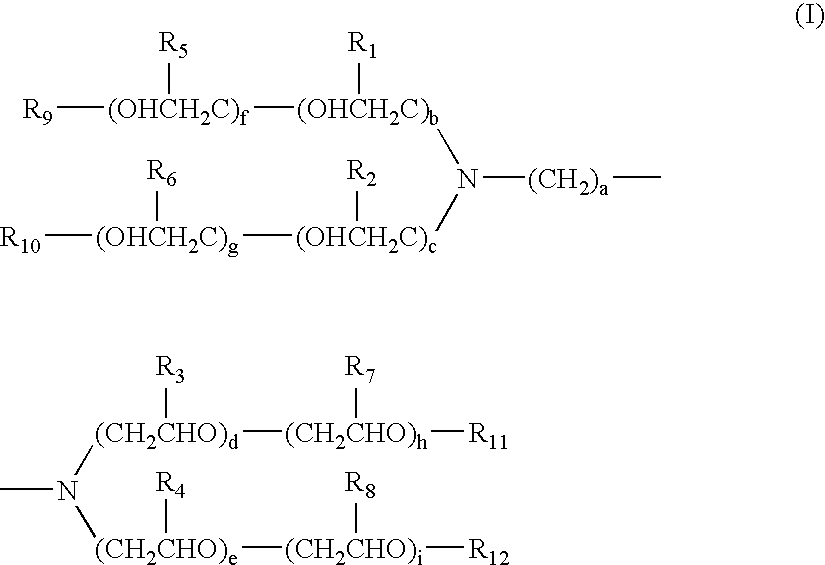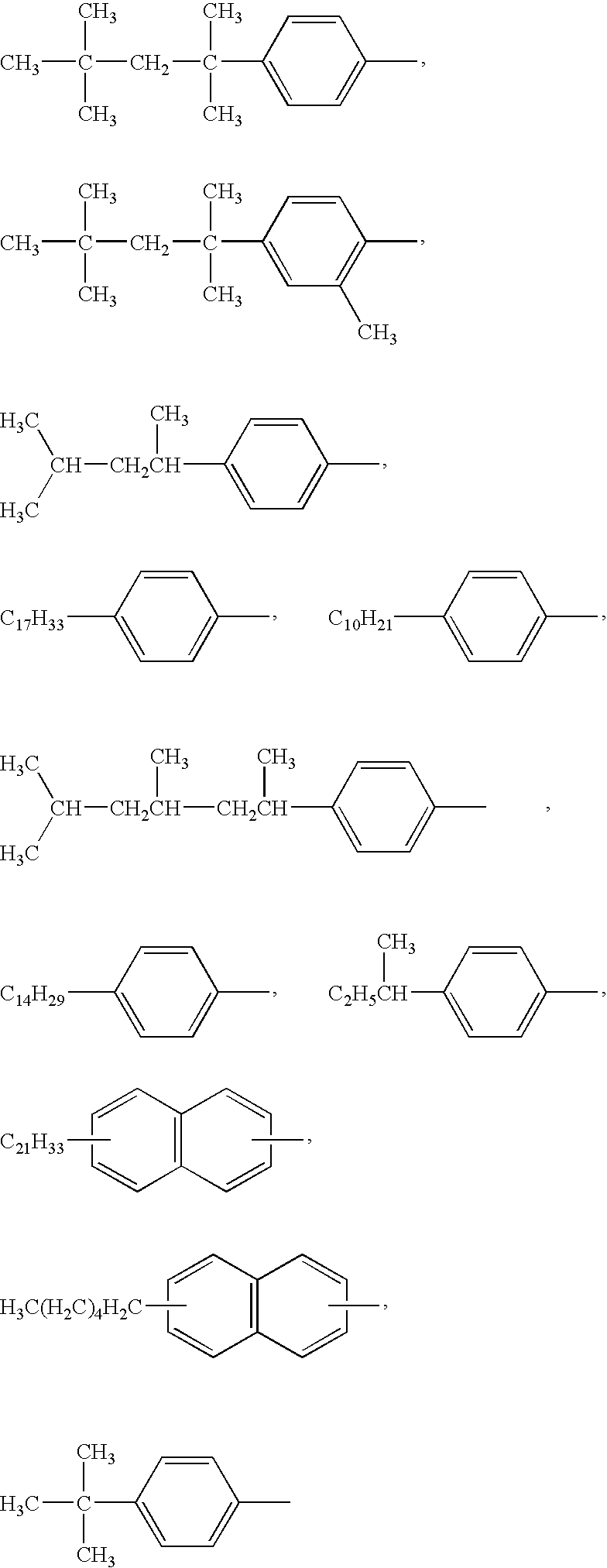Developing solution for lithographic printing plate precursor and method for preparing lithographic printing plate
a technology of developing solution and lithographic printing plate, which is applied in the direction of photomechanical treatment, instruments, photosensitive material auxillary/base layer, etc., can solve the problems of poor solubility of light-exposed area to alkaline developing solution in the development process, poor resistance of non-heated areas (i.e., image areas) to dissolution in alkaline developing solution, etc., to suppress the occurrence of developing sludge origin, the effect of high sharp
- Summary
- Abstract
- Description
- Claims
- Application Information
AI Technical Summary
Benefits of technology
Problems solved by technology
Method used
Image
Examples
examples
[0258] The present invention will hereinafter be explained in more detail with reference to the following non-limitative working Examples.
[0259] [Preparation of SiO2-Containing Alkaline Developing Solution]
[0260] SiO2-containing alkaline developing solutions were prepared as follows. Diverse compounds shown below, each was added at various concentrations summarized in the following Table 1 to one liter of an aqueous solution comprising 4.0% by weight of potassium silicate whose molar ratio of SiO2 / K2O was 1.1 to obtain developing solutions (1) to (30). For comparison, the above aqueous solution comprising 4.0% by weight of potassium salt whose molar ratio of SiO2 / K2O was 1.1 was referred to as developing solution (61), and a developing solution (62) was prepared by adding a polyoxyalkylene adduct of alkylene diamine to the above aqueous solution.
[Preparation of Nonreducing Sugar Containing Alkaline Developing Solution]
[0261] Nonreducing sugar-containing alkaline developing soluti...
synthesis example 5
>
[0272] To a 500 ml volume three-necked flask equipped with a stirring machine, a cooling tube and a dropping funnel, there were added 31.0 g (0.36 mole) of methacrylic acid, 39.1 g (0.36 mole) of ethyl chloroformate and 200 ml of acetonitrile and then the resulting mixture was stirred while cooling it in an ice-water bath. To this mixture, there was dropwise added 36.4 g (0.36 mole) of triethylamine through the dropping funnel over about one hour. After the completion of the dropwise addition, the ice-water bath was removed and the mixture was stirred at room temperature for 30 minutes. To this reaction mixture, there was added 51.7 g (0.30 mole) of p-aminobenzene sulfonamide and the resulting mixture was stirred over one hour while warming the mixture at 70° C. in an oil bath. After the completion of the reaction, the mixture was introduced into 1 L of water while stirring the water and the resulting mixture was stirred for 30 minutes. This mixture was filtered to recover the prec...
PUM
| Property | Measurement | Unit |
|---|---|---|
| molar ratio | aaaaa | aaaaa |
| wavelengths | aaaaa | aaaaa |
| polydispersity | aaaaa | aaaaa |
Abstract
Description
Claims
Application Information
 Login to View More
Login to View More - R&D
- Intellectual Property
- Life Sciences
- Materials
- Tech Scout
- Unparalleled Data Quality
- Higher Quality Content
- 60% Fewer Hallucinations
Browse by: Latest US Patents, China's latest patents, Technical Efficacy Thesaurus, Application Domain, Technology Topic, Popular Technical Reports.
© 2025 PatSnap. All rights reserved.Legal|Privacy policy|Modern Slavery Act Transparency Statement|Sitemap|About US| Contact US: help@patsnap.com



